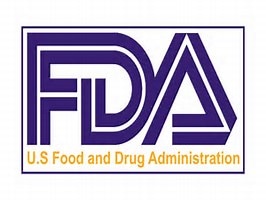
It is January 2017 and the questions and answers below are taken directly from the FDA website. Their position toward mercury is extremely casual and reckless in my opinion, so I’ve commented in italic. Research all opinions before you make the decision to store mercury in your head.
Question #1 from the FDA website.
If I am concerned about the mercury in dental amalgam, should I have my fillings removed?
If your fillings are in good condition and there is no decay beneath the filling, FDA does not recommend that you have your amalgam fillings removed or replaced. Removing sound amalgam fillings results in unnecessary loss of healthy tooth structure, and exposes you to additional mercury vapor released during the removal process.
However, if you believe you have an allergy or sensitivity to mercury or any of the other metals in dental amalgam (such as silver, tin, or copper), you should discuss treatment options with your dentist.
My Opinion:
Note that the unnecessary loss of healthy tooth structure that is noted to be a downfall of removing mercury amalgams began when the tooth was originally drilled for the purpose of using mercury amalgam. I do not think that the comparison of losing slightly more tooth structure compares in any way to the damage that mercury can unleash in the body.
The exposure to mercury vapor that is mentioned is the same mercury vapor that was experienced when the
mercury was used to fill the tooth. It is the same vapor that continues to off-gas from the tooth while the mercury
is in place in the mouth. Safe removal, which includes a biologic dentist, is done so that vapor is contained and the patient is safe from further exposure. The video, Smoking Teeth, will show how vapors are released from mercury fillings. This short video can be seen at http://www.searchforthecausenotjustthecure.com/blog/three-lies-about-mercury-fillings
The verbiage about “allergy or sensitivity to mercury” is what the dental profession is now using to side-step the truth. There is no such condition as an “allergy or sensitivity to mercury.” Mercury is one of the most deadly elements on earth and is said to be next to plutonium in toxicity. One is not allergic when mercury invades the body. One is poisoned. According to this example death from the fallout of a nuclear explosion would label you as allergic to plutonium.
Question #2 from the FDA website.
What is bioaccumulation?
Bioaccumulation refers to the build-up or steadily increasing concentration of a chemical in organs or tissues in the body. Mercury from dental amalgam and other sources (e.g., fish) is bioaccumulative. Studies of healthy subjects with amalgam fillings have shown that mercury from exposure to mercury vapor bioaccumulates in certain tissues of the body including kidneys and brain. Studies have not shown that bioaccumulation of mercury from dental amalgam results in damage to target organs.
My Opinion:
It does not take a medical degree to understand that bioaccumulation of mercury will eventually create a burden on the body. Your tissue and organs cannot benefit from this storage that is agreed to accumulate in the kidneys and the brain. The fact that the FDA does not require proper testing be done to show the resulting damage is curious. I stand with my opinion that the mouth, inches from the brain, is a really bad place to store mercury.
Question #3 from the FDA website.
What should I know before getting a dental amalgam filling?
Deciding what filling material to use to treat dental decay is a choice that must be made by you and your dentist.
FDA continues to evaluate the available information on dental amalgam, and will update the information on this web page as necessary. As you consider your options, you should keep in mind the following information.
Benefits:
Dental amalgam fillings are strong and long-lasting, so they are less likely to break than some other types of fillings. Dental amalgam is the least expensive type of filling material.
Potential Risks:
Dental amalgam contains elemental mercury. It releases low levels of mercury in the form of a vapor that can be inhaled and absorbed by the lungs. High levels of mercury vapor exposure are associated with adverse effects in the brain and the kidneys.
FDA has reviewed the best available scientific evidence to determine whether the low levels of mercury vapor associated with dental amalgam fillings are a cause for concern. Based on this evidence, FDA considers dental amalgam fillings safe for adults and children ages 6 and above. The weight of credible scientific evidence reviewed by FDA does not establish an association between dental amalgam use and adverse health effects in the general population. Clinical studies in adults and children ages 6 and above have found no link between dental amalgam fillings and health problems.
The developing neurological systems in fetuses and young children may be more sensitive to the neurotoxic effects of mercury vapor. Very limited to no clinical data is available regarding long-term health outcomes in pregnant women and their developing fetuses, and children under the age of six, including infants who are breastfed. Pregnant women and parents with children under six who are concerned about the absence of clinical data as to long-term health outcomes should talk to their dentist.
However, the estimated amount of mercury in breast milk attributable to dental amalgam is low and falls well below general levels for oral intake that the Environmental Protection Agency (EPA) considers safe. Despite the limited clinical information, FDA concludes that the existing risk information supports a finding that infants are not at risk for adverse health effects from the mercury in breast milk of women exposed to mercury vapor from dental amalgam. Some individuals have an allergy or sensitivity to mercury or the other components of dental amalgam (such as silver, copper, or tin). Dental amalgam might cause these individuals to develop oral lesions or other contact reactions. If you are allergic to any of the metals in dental amalgam, you should not get amalgam fillings. You can discuss other treatment options with your dentist.
My Opinion:
Let’s start with a correction to the statement about who should decide what materials you put in your mouth. This is not a decision between you and your dentist. This is your decision and yours' alone. It is understood that The American Dental Association is in complete denial about the dangers of mercury and that dentists were trained in that atmosphere.
Moving on to the benefits of mercury amalgam fillings, there are in truth none. Durable and cheap do not compensate for a lower IQ, chronic illness, chronic pain, loss of cognitive thinking, neurological disorders or associations with ADHD, autism, Parkinson’s, Alzheimer’s ALS, Multiple Sclerosis and endless debilitating conditions.
It is agreed that the vapor from amalgam fillings does off-gas and is absorbed by the body. It is agreed that these vapors can be bioaccumulated and it is agreed that quantities of storage in the body are harmful. Next the FDA notes they have utilized the “best available science” to determine that mercury filling are safe for those 6 and above. I would challenge this statement as would anyone who has recognized that their long-term illness was caused by mercury.
“FDA does not establish an association between dental amalgam use and adverse health effects in the general population.” Let’s look at that statement.
When the body absorbs, swallows or digests mercury it immediately goes to work to manage the toxicity. Its priority is to keep the bloodstream free of contamination and to find storage for the toxicity it cannot safely detox. Organs and tissue used as storage areas work as a short-term fix, but long-term storage creates secondary issues of illness. In the case of on-going exposure, as with dental fillings, the burden on the body can become overwhelming. Once storage areas are overloaded and the body is toxic, the manifestations can take almost any shape, resulting in a wide variety of illnesses. Because these illnesses manifest at different rates and intensity, they are rarely traced back to mercury as their source.
When we move on to the FDAs stance on breastmilk not being too poisoned for an infant, you have to wonder how this study took shape. There is no logical explanation that makes exposing a newborn to mercury sensible. We know there is no acceptable level of mercury for a body, human or animal. How could we find exposing a new born to mercury acceptable?
While the FDA and ADA find the use of mercury to be not only tolerable, but not harmful and a benefit, there are those who strongly object. The World Health Organization and the United Nations have begged America to cease the use of mercury in dentistry, yet it continues.
Make your decisions about mercury carefully. Your life depends on it.
NOTE: The FDA updated its recommendations for the use of amalgam fillings in 2020 for special populations. This has, to date, left remaining regulatory agencies unchanged in their opinion. The FDA reports as follows:
Date Issued: September 24, 2020
The U.S. Food and Drug Administration (FDA) is providing recommendations about the use of dental amalgam in certain groups of people who may be at greater risk to the potential adverse health effects of mercury exposure, to include:
- Pregnant women and their developing fetuses;
- Women who are planning to become pregnant;
- Nursing women and their newborns and infants;
- Children, especially those younger than six years of age;
- People with pre-existing neurological disease;
- People with impaired kidney function; and
- People with known heightened sensitivity (allergy) to mercury or other components of dental amalgam.
